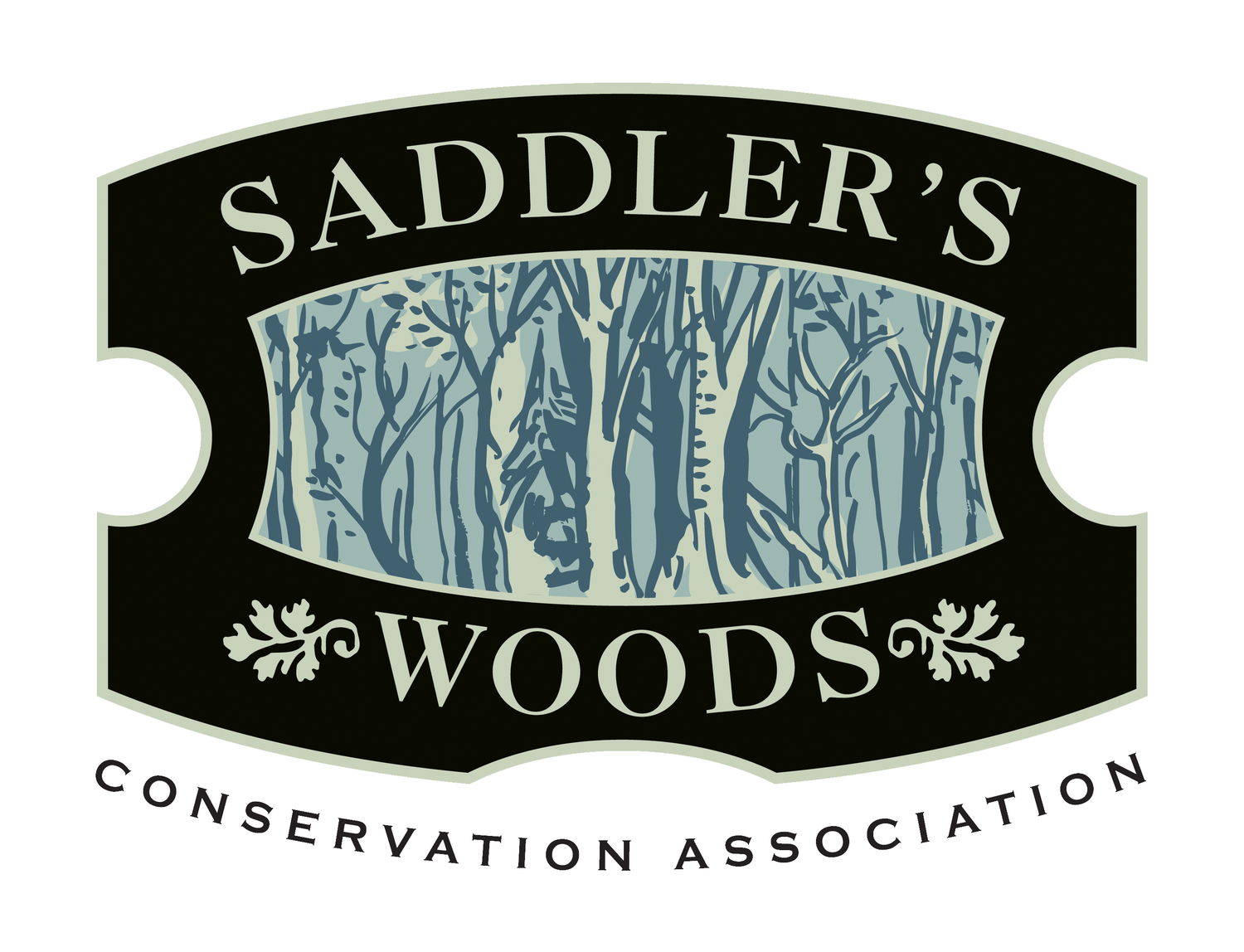When Settlers Arrived
Saddler's Woods is a 25.8 acre, old growth forest fragment which provides a good example of what the landscape looked like when European settlers arrived. Before European settlers arrived, the area around Newton Creek was inhabited by the Leni Lenape Native American tribes. The landscape was heavily forested around the creek area. A Leni Lenape trail running between the ferry at Cooper's Point in Camden and Haddonfield is now Haddon Avenue.
When Europeans first arrived in the area known today as Haddon Township, (in the early 1600’s) the forests which covered New Jersey were cleared for farms, pastures, residential and commercial use and timbered for lumber and fuel. As the trees disappeared, the ecosystem of the forest was badly compromised.
Joshua Saddler (1785 - 1880)
Descendants of Joshua Saddler and the Haddon Township Historical Society are currently researching the story of Joshua Saddler and new information and changes to some records will be ongoing as we learn more about Joshua Saddler.
Records show that Jonathan Fisher was Joshua Saddler's son-in-law and not an alias for Joshua himself.
We do know that in the early 1800s a fugitive slave, Joshua Saddler escaped from a Maryland plantation. He reached New Jersey and soon found work with Josiah or "Cy" Evans, a local Quaker farmer. Upon learning of his new employer's negative feelings on slavery, Joshua Saddler told him of his escape.
Mr. Evans received word of inquiries being made about Joshua by his old master, who was in New Jersey on business. Mr. Evans feared for Joshua's safety and eventually was able to bargain with the plantation owner to sell him the runaway slave for a rather small sum. This act secured Joshua's safety and freedom. Later, Joshua repaid Mr. Evans the sum of his "freedom" money.
Joshua did well in the area and purchased plot and built a small house on a wooded lot. As word spread of the new haven, other African-Americans came and built homes. In time, a town was formed and named "Saddlertown" in honor of Joshua Saddler.
Joshua Saddler gave protection to his wooded property in his will, stating that none of his heirs could cut the timber down. For this conservation ethic, the woods next to Saddlertown was named in Joshua's honor in January of 2004.
Nearby, historic Rhoades Chapel was built by Quakers as a school for African - American children.
Saving Saddler's Woods -Timeline
During the 1970's the woods were earmarked for high rise apartments. Haddon Township high school student Doug Hefty studied the forest and presented then -owner, Samuel Oshiver, with an ecology report of the woods. Oshiver was so impressed with Doug's findings that he decided not to develop the tract, limiting the development of the Haddon View high rise apartments to across MacArthur Boulevard.
In June of 1987, over 300 residents attend a Township meeting to protest the proposed a townhome development by Rosengarten Development company. The planning and zoning board looked favorably upon the development as an income stream for the Township.
Opposition to the townhome development was lead by "The H -Team", a group of citizen activists who worked vigorously to thwart the development. The H-Team, lead by Hugh Williams,George Ames, Howard Rementer, Helene Williams,Carol McConnville, Elizabeth Westcott, Bill Brahms, and Jane Brahms gathered petitions and contacted government agencies such as the Army corps of Engineers to bring attention to the wetland features in the woods. By January of 1988, the Mayor and Commissioners began to back off of the plan to develop townhomes citing the need to further study impacts to traffic, sewage treatment capacities and water supply .
In 1990, the Township applied for Green Acres funds to purchase the woods for recreation purposes.
In 1999,with Green Acres funds, the Township purchased 15.3 acres of the land with the intention of developing athletic fields. The Diocese of Camden owns the other 10.5 acres behind the Paul VI School Fields. Several environmental and civic organizations ban together to oppose development. The Newton Creek Watershed Association, The Delaware Riverkeeper Network, The Saddlertown Civic Association, www.macarthurwoods.com, The HaddonLeigh Neighbors, The Green Valley Tennis Club , The Haddonview Tenants Association, and The Audubon Wildlife Society all played an active role in opposing development.
In February 2002, Mathew Largess, an old growth expert and arborist from Rhode Island, Dr. Whitmer of the Academy of Natural Sciences in Philadelphia, and Dave Johnson, a forester for NJ DEP division of Parks and forestry, aged several trees and determined that some of the forest is old growth, with several trees over 150 years old. It was also determined that the younger portion provides a protective buffer for the old growth trees and that development on the secondary growth portion of the tract would further the negative impacts to the remaining old growth ecosystem.
On Earth Day, April 22, 2003, with over 1800 petitions to preserve the site, Haddon Township's Mayor and Commissioners adopted a Conservation Easement drafted by environmental commission representative and candidate, Kathy Hogan. The conservation easement preserves the Township owned portion of the woods in perpetuity. The decision, made during a heated election, ended the 3 year struggle to prevent athletic field development. An ad hoc committee was then formed to investigate artificial turf to improve existing township fields.
In January 2004, Haddon Township formally named the area Saddler's Woods in honor of Joshua Saddler, a runaway slave who wrote into his will that , "none of the timber shall be cut thereon".
In June 2004, Maggi Downham, David Jacobs and Janet Goehner - Jacobs, founded the Saddler's Woods Conservation Association to further care for the woods so many had worked so hard to save.
Today, over a thousand visitors every year enjoy the woods for volunteer activities, tours or simple passive recreation.
To learn more about the history of the Haddon Township community, visit the Haddon Township Historical Society Website.

